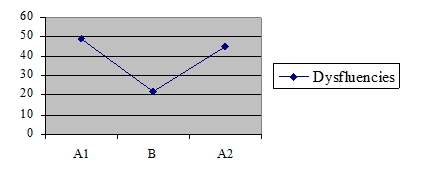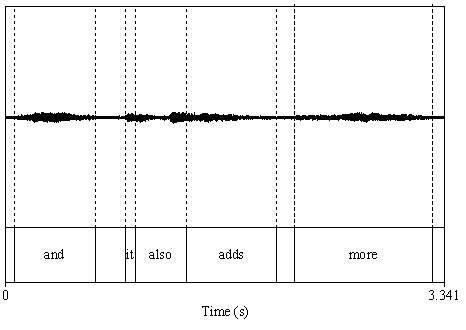Why is this Stutterers Speech More Understandable After 'Smooth Speech' Therapy? A Single Case Study
Caroline Menezes - caroline.menezes@utoledo.edu
Lee Ellis - LEllis@UTNet.UToledo.Edu
University of Toledo
2801 W. Bancroft Street
Toledo, OH, 43606
Popular version of paper 1pSC
Presented Monday afternoon, October 26, 2009
158th ASA Meeting, San Antonio, TX
According to the American Speech and Hearing Association, stuttering is a phenomenon that affects the fluency of speech. Stuttering has an early onset, beginning in childhood and in some people lasting throughout their lifetime. Stuttered speech is filled with dysfluencies that may make it difficult for normal speakers to understand what is said. Some of the dysfluencies include repetitions of whole words (say say), repetitions of part of the words (r ready); prolongations or lengthening of words (yoouu), sounds (ssspeak), and even pauses (your breath). Stutterers are often tense when they speak and because of this might appear to struggle while speaking. Their speech will often appear blocked, i.e., their mouth is ready to say a word but nothing comes out. As a result stuttered speech is filled with interjections such as um, eh etc. Normal speech has a regular pattern of strong and weak syllables separated by pauses of linguistically meaningful lengths. In other words, pauses between words are shorter than pauses between phrases. This is referred to as speech rhythm. In stuttered speech normal rhythm is disrupted by the various dysfluencies mentioned above. Often the person will compensate for the long delays in producing some words by rushing through other words.
There are many treatments for stuttering and most of them are behavioral therapy. The treatment analyzed in this study is Smooth Speech. Smooth Speech has been claimed to be the most effective treatment in the world for reducing stuttering severity in adults, children and adolescents (Craig, 1998). It works on the principle that stuttering involves both abnormal breathing patterns and muscle dysfunction. Smooth speech therapy teaches the person to slow down his/her speaking rate and to use considerably more airflow during speech. The client is advised to take regular pauses between phrases to improve their rhythm. The client is also taught to continuously monitor and consciously control their speech.
Click HERE to listen to a sample of stuttered speech
Click HERE to listen to a sample of smooth speech
This study focuses on understanding the phonetic differences in stuttered speech and Smooth Speech in what is called an ABA design. The ABA design tests the short term efficacy of a given treatment. A is the subject speaking in her normal speech style (here stuttering) and B is the subject speaking after a short treatment using the Smooth Speech method. This is a single case study where the subject was a female university student. Each part of the study measured three minutes of speech. The graph below plots the number of dysfluencies in the subjects speech within the ABA design where the A1 is stuttered speech before treatment, B is speech using

Figure 1. Number of dysfluencies
Smooth Speech method and A2 is stuttered speech after treatment. Note B here is the Smooth Speech following a short introductory training session. From this graph it is clear that when the subject used Smooth Speech her dysfluencies were reduced by nearly half. Of the different types of dysfluencies we see a considerable reduction in part word repetition for Smooth Speech (4 when compared to 21, 22 for stuttered speech). Since treatment focuses on slowing down of speech most of the dysfluencies that continue to be manifested in Smooth Speech were prolongations but there is a reduction in struggle behavior.
As mentioned above normal speech rhythm is highly compromised in stuttered speech due to the large number of dysfluencies that occur. Long pauses occur where normally they should not and words are considerably reduced. In the following figures we show an example of speech rhythm for both stuttered speech (above) and Smooth Speech (below).

Figure 2. Speech rhythm of stuttered speech.

Figure 3. Speech rhythm of Smooth Speech.
In the figure above the client says flow of speech and a. In this utterance flow of is compressed to almost non-understandable limits while the word speech is interspersed with two pauses. Further, there is a large pause between speech and and a and then again after a. In effect the speaker has shorter words and longer pauses.
In the figure below the client says and it also adds more and here we see a reverse pattern. Words are elongated (perhaps more than normal) and pauses are reduced. Reduced speech rate is targeted in Smooth Speech therapy and this is the reason for the abnormally elongated words but it increases understandability by decreasing the length of breaks between words and decreasing breaks within words.